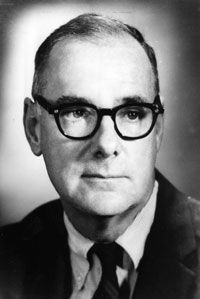On 1st of May 1965 an experimental aircraft broke 4 world records. 1 for sustained altitude and 3 for speed. It travelled at a speed of over Mach 3 (3 times the speed at which sound travels at sea level).
This aircraft went on to break more records and do amazing recon sorties over Russia and other communist countries and brought back crystal clear images of even faces of people working in defence sites from an altitude of 70,000 feet and while flying at over Mach 3.
This amazing Lockheed Aircraft was called the Blackbird or in military terms, SR 71.

While people rightly regarded it as an epitome of technological brilliance I realized, over time, that this was, in reality, a fantastic example of Project Management.
I guess a little background is important to bring context to this discussion.
Kelly Johnson of “Skunk Works” Lockheed had made an unsolicited proposal to the military in 1955 to make an aircraft that would fly over Russia and take pictures of their military development. The aircraft would fly so high, over 70,000 feet, and would not need any refuelling while flying half the circumference of earth. The Russians did not have any missile that would go that high and hence it did not need any speed but just altitude. From the date of approval till the very first flight over Russia it took only 6 months for the Skunk Works to put together a Spy Aircraft system called U2.
However, Russia, could not sit quietly and they developed their own missile systems that would not only be super fast but also reach over 80,000 feet. And before long Russia shot down one of the U2s.
The military got back to Lockheed to make a spy plane that would do the same thing, only faster, say mach 3. A speed that no Russian missile could fly at. And thus began the amazing project management journey that has made to the PM-Pulse list of “Top Projects Of All Times”.
0n 30th January 1960 the US Military provided a go ahead for building 12 such aircrafts with Lockheed. At that time Lockheed did not know exactly how to do this but accepted the challenge. Kelly Johnson realized that this aircraft would need absolutely new design, new engine, new navigation system, new safety measures, new material, new fuel, new engineers, new vendors, new standards for selecting those vendors, new metal parts and even new machines, that did not exist anywhere, to work on those parts. Everything would have to be new. He realized that this was not just a technical challenge it was also a challenge of Project Management. So Lockheed hired Richard Bissell (an economist) and made him the program manager. And this resulted in such an unprecedented project team work that the first aircraft (which could fly twice the speed of a bullet and faster than any missile built non stop for a range of 6,000 Kms before refuelling) in just two and half years.
This was one of the first projects that worked on the concept of “Self Organized Teams” and a new methodology that is very similar to the concept of Agile.
An overall master schedule was made based on an overall “Non-Technical” WBS that was very granular. And based on the non-technical WBS Workpackages, that listed the capabilities of deliverables, all the vendors were hired. The criteria for selection was more to do with innovation rather than proven standard work in the past. Each of the engineers and designers were hand picked who had the attitude of revolutionary thinking and problem solving skills rather than technical credentials. The Program Manager Bissell and the Chief Engineer Johnson used to have a meeting at the end of every day to see what happened yesterday and what needs to happen the next day. Every morning the two of them would have a joint meeting with team leaders talking about progress, new lessons learned, things that worked and things that could not work, risks faced and issues unearthed. There were no official hierarchy among the core team and hence the communication flowed without any cover of “diplomacy” and “massaging”. This ensured that the ground realities were known and discussed among the core team as it is.
Interesting concepts for team motivation were created. Every time they would work late, they were treated with some of the best quality food that existed at that time, movie hall was created inside the work place for people to take a break and take their minds off work and avoid burnout. Since this was technically so challenging, everyone used to come forward with show-stopping issues Richard Bissell started rewarding USD 50 to anyone who would bring an “Easy Problem To Solve”. This made sure that everyone would try to solve their own issues as far as possible and try to come with suggestions and alternatives rather than show-stoppers. Team members were regularly shown the movies of the technical advancement of the Russians in the military aviation to charge the team up with feelings of “Patriotic Pride” and the will to defeat Russia at any costs.
The best part of the planning was that team members were told to imagine every conceivable risks that could affect the component that they were supposed to build, even before they started building it. Not only that they were supposed to identify all risks, they were also supposed to find solutions for each and every of those risks in the abstract and document them. Once all this was done, only then the specifications for those parts were documented and then the building of the parts started. This resulted in a lot less numbers of challenges during execution as well as the production of a part that was very resilient and versatile.
Various teams were created working on 5 different versions of prototypes and the final version of the aircraft was a combination of parts taken from all these 5 prototypes.
Imagine a solution that had full titanium body, where the entire skin of the aircraft would elongate by 2 feet during flight due to the expansion owing to friction heat caused by travelling through air at 2 times the speed of sound, and fuel that would be seeped into the skin of the aircraft instead of a separate set of tanks. A revolution so ahead of time that some of these features are still not used in todays aircrafts.
A project that was created of this magnitude without any digital modelling or data crunching and without any software help as well as without the communication technology that we had today, in just 2 and half years.
Due to the amount of impetus on risk management based engineering and value engineering the acceptance testing for this aircraft turned out to be the shortest ever in the history of military aviation.
These planes were so successful that not one of them got shot down. Though it is said that Military lost over 11 of them in their ultimate total of 32 (not a verified number as this is something the military would never tell) that were built, due to pilot error and other technical issues.
In September 1974 they were first shown to public in the Farnborough Air show where the “Black Bird” flew in from New York to London in just 1 hr and 54 minutes and this was a huge record. And after this event this military aircraft became the “Most Famous Secret” in aviation history. While returning from that show it set another record by travelling from London To Los Angeles in just 3 hrs and 48 minutes (including 40 minute mid-air refuelling at sub sonic speeds). In terms of local time, it meant that it had “Landed 4 hours Before It Took Off”.
These planes were so sturdy and technically rugged and amazingly resilient (thanks to abstract risk management during design stage of each component) that they were in active service till 1990 (no civilian knows the exact date of retirement).
However, the last flight ever done by this magnificent aircraft was on October 9, 1999 done by NASA and even that flight broke two records. One for altitude, sustained flight at 83,100 feet (though the documented service ceiling was at 74,000 feet), a height from which height the curvature of the earth is easily visible.

And the second for speed as it flew for a short moment at Mach 3.31 (it had earlier flown at max of Mach 3.11). This last flight had names of Kelly Johnson and Richard Bissell endorsed on the fuselage of the plane. None of them could see the final flight as Kelly Johnson passed on in 1990 and Richard Bissell passed on in 1994 leaving an indelible mark on Project Management.
Kelly Johnson Richard Bissell


Most of the information here is gleaned from my discussions during my consulting with US Navy, Indian Air Force, 1972 Edition of Readers Digest that covered the Farnborough Airshow, Military and Aviation Magazines and a documentary on this aircraft in the History channel.